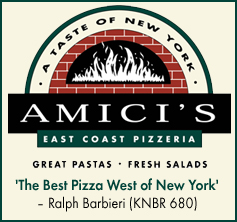| |
|

COVER STORY
Animal Heroes
10 Questions with... Rachael Ray
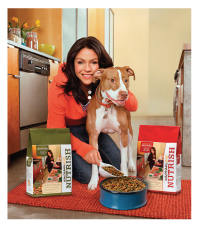 Most Food Network fans know Rachael Ray for her popular series 30 Minute Meals and $40 a Day. Then Oprah Winfrey introduced her to a wider audience on her long-running talk show. Winfrey knows charisma when she sees it, and soon Ray became a household name, with the help of Winfrey’s Harpo Productions, on her own Emmy Award-winning CBS daytime television show simply titled Rachael Ray. The charming, energetic Ray has become a phenomenon, as well as a marketing dynasty, with best-selling cookbooks, a line of cookware and knives, signature food products for Colavita, and a lifestyle magazine called Every Day with Rachael Ray. Most Food Network fans know Rachael Ray for her popular series 30 Minute Meals and $40 a Day. Then Oprah Winfrey introduced her to a wider audience on her long-running talk show. Winfrey knows charisma when she sees it, and soon Ray became a household name, with the help of Winfrey’s Harpo Productions, on her own Emmy Award-winning CBS daytime television show simply titled Rachael Ray. The charming, energetic Ray has become a phenomenon, as well as a marketing dynasty, with best-selling cookbooks, a line of cookware and knives, signature food products for Colavita, and a lifestyle magazine called Every Day with Rachael Ray.
What a lot of people don’t know about Ray is that she loves animals, and she puts her money where her mouth is. She launched Rachael’s Rescue (www.rachaelsrescue.org) to benefit pet charities, and she just helped to create a line of healthful dog food and treats called “Nutrish” (www.nutrishforpets.com) from which she donates her proceeds to animal causes. For example, after hearing the horrific story of a puppy brutally beaten and left for dead by a man at the U.S.-Mexico border (and saved by the border patrol officers who saw it on surveillance video), Ray’s rescue donated $5,000 to the local animal shelter to help pay for the puppy’s care.
Ray is also a pit bull advocate, blogging about life with her beloved red nose pittie, Isaboo, on her Web site (www.rachaelray.com); featuring the organization BAD RAP (www.badrap.org) with some of the Michael Vick dogs on her show shortly after the story of his dog-fighting ring broke; and speaking out on Larry King Live to dispel the myths about America’s most misunderstood breed.
Northside San Francisco chatted with Ray recently about her rescue efforts, Nutrish, and her love for a pretty pittie named Isaboo.
You recently came out with a line of healthful, super-premium dog food called Nutrish – how did your collaboration with Ainsworth Pet Nutrition come about?
I love my dog Isaboo, and as a member of my family I wanted to make sure that she ate as well as the rest of us. So, I was looking to develop a new line of dog food that not only tasted great, but was super high quality. When I talked to the folks at Ainsworth, they shared the same vision. It was a perfect partnership and the result was Rachael Ray Nutrish.
What were the most important factors when it came to creating the recipes?
I think what is really cool about this product is that pet parents will receive the best of both worlds – a delicious recipe and a highly nutritious formula with meat as its first ingredient and no by-products. Those were the two most important factors.
Along with two varieties of food, Real Chicken and Veggies and Real Beef and Brown Rice, Nutrish also offers crunchy treats called “Isaboo Booscotti” and chewy treats called “Isaboo Grill Bites.” What is the story behind the treats?
We named the food after Isaboo, but not only that, these are two of Isaboo’s favorite things – biscotti & burgers. Working with Ainsworth, we were able to develop a more dog-friendly treat.
After last year’s pet food safety scare, people are very concerned about how their pet food is made. How does Nutrish ensure product safety?
Ainsworth Pet Nutrition, the manufacturer of Nutrish, demands the utmost in food safety and quality from their suppliers and maintains rigorous testing to ensure ingredient and product safety.
Your proceeds from Nutrish go to benefit Rachael’s Rescue – why did you decide to start this animal-related nonprofit group?
Animals hold a special place in my heart and there are so many out there that need our help. It was really important that with the launch of Nutrish, I would be able to give back on a continual basis and help these at-risk animals.
What are some of the things Rachael’s Rescue does to help the millions of animals in America’s shelters?
I’m really excited about Rachael’s Rescue. It’s one of the main reasons I decided to develop Nutrish. My proceeds from each sale will be donated to organizations that are dedicated to helping at-risk animals through adoption, medical care and educational programs, along with training and outreach initiatives. We’re going to try to help as many animals as we possibly can.
You decided to adopt another pit bull, your beautiful Isaboo. What do you love about the breed?
I think there is a huge misperception when it comes to pit bulls. They are a loyal, loving and very friendly breed. When I bring her on set, she charms the whole crew.
I write a monthly column in Northside S.F. about my pit bull, Jasmine Blue, and I get a lot of mail from readers happy to see the breed getting good press. You talk a lot about your love for Isaboo, and you’ve featured one of my favorite pit bull rescue organizations, BAD RAP, on your CBS morning show. Do you get a lot of positive response from viewers?
Absolutely. It’s amazing the support I receive from pit bull owners. Like me, they are all so proud of their “children.” I’m glad that I’m able to show people what loving pets pit bulls can be.
Pit bulls have some distinctive traits – my Jazzy snores like a man and thinks she’s a 60-pound lap dog – what are some of your favorite Isaboo traits?
We can never have any of my shows on in the house because Isaboo goes nuts. She hears me in one room and sees me in another and doesn’t understand.
Where can people find out more information about Nutrish and Rachael’s Rescue?
We just launched www.nutrishforpets.com – make sure to check it out!
– S. D. Reynolds

Kimberly Guilfoyle: A defiant defender of dogs’ rights
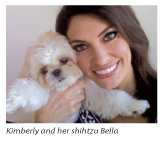 Kimberly Guilfoyle, the former first lady of San Francisco, is now a genuine TV star in New York City and across the country, having made the transition from successful prosecutor to media sensation. Her passion has always shown in her work, no matter what she undertakes, and that includes her support for animal rights. She rose to national prominence during the infamous San Francisco “dog maul trial” where, as second chair, her team landed a second-degree murder charge against the owner of the dogs that killed a Pacific Heights woman. (That verdict was subsequently thrown out, but just recently has been reinstated.) “In so many cases, it is not the animal’s fault that there is violence,” says Guilfoyle. “You have to train these animals properly. They can become weapons.” Her frequent media appearances led to gigs on Good Morning America and Court TV, but she finally landed a permanent position as host of The Lineup on Fox Television. The frequent flying to New York took a toll on her marriage, in 2006 she and Mayor Newsom divorced. She has since remarried and has a son, Ronan. Guilfoyle is a big supporter of the many animal shelters throughout New York and the Humane Society of the United States. Kimberly Guilfoyle, the former first lady of San Francisco, is now a genuine TV star in New York City and across the country, having made the transition from successful prosecutor to media sensation. Her passion has always shown in her work, no matter what she undertakes, and that includes her support for animal rights. She rose to national prominence during the infamous San Francisco “dog maul trial” where, as second chair, her team landed a second-degree murder charge against the owner of the dogs that killed a Pacific Heights woman. (That verdict was subsequently thrown out, but just recently has been reinstated.) “In so many cases, it is not the animal’s fault that there is violence,” says Guilfoyle. “You have to train these animals properly. They can become weapons.” Her frequent media appearances led to gigs on Good Morning America and Court TV, but she finally landed a permanent position as host of The Lineup on Fox Television. The frequent flying to New York took a toll on her marriage, in 2006 she and Mayor Newsom divorced. She has since remarried and has a son, Ronan. Guilfoyle is a big supporter of the many animal shelters throughout New York and the Humane Society of the United States.
Humane Society of the United States: 2100 L Street, N.W., Washington, DC 20037; 301-258-8276, www.hsus.org
– B. Bellingham

Corporate heroes
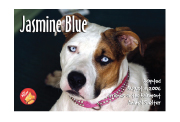 Comcast Comcast
Since its launch in June 2006, Comcast’s Pet Adoptions on Demand has become one of the cable giant’s most viewed on-demand programs. Teaming with local shelters, Comcast provides free video profiles of animals looking for homes. A staff member interacts with each pet, talking about personality and ideal living environment. Every two weeks, as the profiled pets find their forever families, profiles are refreshed with new furry faces.
Comcast’s Bryan Byrd says the video profile gives perspective owners a chance to see the animal in action. “Pet Adoptions on Demand offers people the opportunity to see the animal’s personality a bit more than a static photo, and since the staff member talks about personality and home suitability, they get a better idea of whether or not this pet will fit in with their family.”
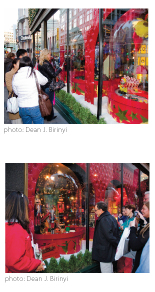 Pet Adoptions on Demand: Tune to Channel 1 for the On Demand menu, go to “Get Local” and select “Pet Adoptions.” Pet Adoptions on Demand: Tune to Channel 1 for the On Demand menu, go to “Get Local” and select “Pet Adoptions.”
PET FOOD EXPRESS
In a joint venture with Virtual Pet Adoptions(www.virtualpetadoptions.com), independently owned Pet Food Express, which has 33 stores in the Bay Area, has helped to find homes for over 44,000 animals.
Owners Michael Levy and Mark Witriol also started the unique and wildly popular “My Mutt” program as a way to raise awareness about pet adoption. The beautiful, large photographs of adopted animals that grace the walls of their stores feature the name of the pet, the year of adoption, and the organization from which the animal came. (Northside S.F.’s own wonder pit bull, Jasmine Blue, once graced the walls of the Market Street store, and she currently watches over the shop at Stonestown.)
Here’s how it works: Participants donate a minimum of $250 to the shelter or rescue group of their choice. A photographer comes to your home for a photo shoot (any animal may participate as long as it was adopted). Pet Food Express pays for the photography, the poster, and for the in-store mounting. For a donation of $500 or more, you can keep the poster after it has been displayed for 10 to 12 months. Not only does “My Mutt” make your pet a star and raise awareness about adoption, the program also helps to pay for much-needed food, medicine, space, and other shelter and rescue group needs.
My Mutt virtual pet adoptions: visit www.petfoodexpress.com and click on the “My Mutt” tab.
MACY’S UNION SQUARE
If you visit Union Square during the holiday season, it is nearly impossible to miss the Annual San Francisco SPCA Holiday Windows at Macy’s. The store windows on the corner of Stockton and O’Farrell Streets are transformed into cleverly themed magical pet residences for adorable cats and dogs seeking loving homes. USA Today described the windows as one of the “10 Great Places to Press Your Nose Against the Glass.” Unlike most retailers, Macy’s takes their merchandise out of the windows during this key shopping season, opting instead to support an incredible cause and to give a holiday gift to the community. For onlookers, the windows provide comic relief from hectic shopping, and for those who adopt, the ultimate gift of a new family member, joy, and the spirit of the holiday season year-round. As Jary Porter, the vice president of Macy’s West Visual Merchandising says, “It is the gift that keeps on giving.” He and his team are all devout pet owners, supporters of the The SF/SPCA, and are responsible for continuing to create captivating windows designed with the animals’ utmost comfort in mind, including temperature control, hidden litter boxes, and comfy spots for those quick cat naps.
“Holiday Windows is The SF/SPCA’s major adoption event of the year, and the commitment of Macy’s to helping us reach our adoption and fundraising goals is deeply appreciated by this organization,” says The SF/SPCA president Jan McHugh-Smith.
Last year’s Holiday Windows inspired the adoption of 276 cats and dogs, raised nearly $40,000 in donations for The SF/SPCA, and also marked the milestone 4,000th window adoption.
This year Macy’s will again partner with The SF/SPCA to present the 22nd year of the Annual Holiday Windows Adoption Outreach event from November 21 through January 1. The windows are made possible though the generous participation of volunteers and sponsors.
Macy’s Union Square: 170 O’Farrell Street, S.F.,
CA 94102; 415-397-3333, www.macys.com
The San Francisco SPCA: 2500 16th Street, S.F., CA 94103; 415-554-3000, www.sfspca.org
– L. Thigpen Hunt

Dorothy Hearst and her promise to the wolves
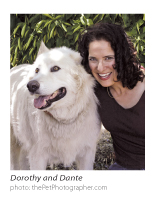 Dorothy Hearst didn’t know it, but she’d been working – in her head – on her first published novel, Promise of the Wolves, for over 10 years. She was busy doing other things, including acting in New York. At the age of 40, she got a black belt in tae kwon do. Although she was busy working in the publishing business, the wolves would not let her go. She quit her job, immersed herself in the book, got it finished, and got it published. Hearst managed to keep the wolves from the door and invite them in at the same time. She now lives in Berkeley where there are lots of dogs – and wolves, I suppose. “As for Berkeley,” chuckles Dorothy, “DHL considers it a remote area.” Dorothy Hearst didn’t know it, but she’d been working – in her head – on her first published novel, Promise of the Wolves, for over 10 years. She was busy doing other things, including acting in New York. At the age of 40, she got a black belt in tae kwon do. Although she was busy working in the publishing business, the wolves would not let her go. She quit her job, immersed herself in the book, got it finished, and got it published. Hearst managed to keep the wolves from the door and invite them in at the same time. She now lives in Berkeley where there are lots of dogs – and wolves, I suppose. “As for Berkeley,” chuckles Dorothy, “DHL considers it a remote area.”
The message of Promise of the Wolves is that humans and beasts can live together – they must live together for the survival of both, though that looks a little dicey right now.
Perhaps needless to say, Hearst is not a fan of Governor Sarah Palin of Alaska, who endorses the killing of wolves by shooting them from planes and helicopters. In fact, Palin offers a $150 bounty of every forepaw of a wolf that’s turned in. In the world of animal lovers, that gives one pause.
When asked about her personal causes, Hearst replied, “For critters? Defenders of Wildlife on the political end and Berkeley East Bay Humane Society on the services side.” Hearst also has extensive information about wolves on her Web site at www.dorothyhearst.com/hearst-help-wolves.htm.
Defenders of Wildlife: 130 17th Street N.W., Washington, DC 20036; 800-385-9712, www.defenders.org
Berkeley-East Bay Humane Society: 2700 9th Street, Berkeley, CA 94710; 510-845-3633, www.berkeleyhumane.org
– B. Bellingham

Every bunny needs somebody sometime
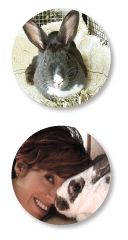 Marcy Schaaf is a Bay Area bunny’s best friend. Schaaf is the founder of SaveABunny, an unflagging rescue group that partners with animal shelters nationwide to provide care and adoption services for homeless rabbits. S.F. Animal Care and Control is currently the only City shelter that accepts rabbits and other small animals, but SaveABunny coordinates adoption outreach events with The SF/SPCA and Pets Unlimited to provide needy bunnies a wider adoption audience. Marcy Schaaf is a Bay Area bunny’s best friend. Schaaf is the founder of SaveABunny, an unflagging rescue group that partners with animal shelters nationwide to provide care and adoption services for homeless rabbits. S.F. Animal Care and Control is currently the only City shelter that accepts rabbits and other small animals, but SaveABunny coordinates adoption outreach events with The SF/SPCA and Pets Unlimited to provide needy bunnies a wider adoption audience.
Marcy was named an In Defense of Animal’s “Guardian of the Month” for SaveABunny’s efforts in rehoming over 300 rabbits each year. As she explained to IDA, “My heart goes out to the underdog, and in the case of companion animals, rabbits are the underdog. Most shelters devote the bulk of their resources to cats and dogs, and too often aren’t able to provide the special care and attention that rabbits need.”
SaveABunny is one of the only Bay Area rescue organizations that will accept critically injured or special-needs rabbits. Camille, one of the first rabbits Schaaf fostered, had a broken back, which paralyzed her rear legs and made her incontinent. Having bonded with this special creature considered unadoptable by any local shelter, Marcy saw a need to help other equally less fortunate castoffs. SaveABunny’s most famous rescue was Phoenix, a rabbit that survived second- and third-degree burns and the loss of both ears after being set on fire by a teenager.
SaveABunny is hosting weekend events at The SF/SPCA and Pets Unlimited to share the secret that rabbits are wonderful indoor companions who can be litter-box trained, and are as smart and loving as dogs or cats. You can meet friendly bunnies available for adoption, and volunteers will be happy to answer any questions. Contact each organization for the dates of upcoming events.
(PHOTO CAPTION: Top: Camille, the special-needs bunny who started it all; below: Marcy Schaaf, founder of SaveABunny)
SaveABunny: P.O. Box 2143, Mill Valley, CA 94942; 415-388-2790,
www.saveabunny.com
The SF/SPCA: 250 Florida Street, S.F., CA 94103; 415-522-3500, www.sfspca.org
Pets Unlimited: 2343 Fillmore Street, S.F., CA 94115; 415-568-3058, www.petsunlimited.org
– C. Beckman

Purebred pets need heroes too
Shelters, humane societies and rescue groups deal predominantly, by necessity, with mixed-breed pets. But purebred dogs and cats have their rescue advocates as well. Two Bay Area groups that deal with a large number of displaced purebred dogs are always in need of loving, adoptive homes, as well as volunteers and donations.
Golden State Greyhound Adoption
Founded by Stuart and Barbara Homer in 2002, Golden State Greyhound Adoption works to find homes for racetrack greyhounds. The group usually places 100 or more dogs per year, but with track closures and the downturn in the economy for commercial racing, they took in 140 dogs last year. Barbara Homer can easily see 150 to 300 dogs needing homes this year. “There have been multiple farm and kennel closings, so many dogs need help. Although we normally take in just Colorado hounds, we’re being asked to take in dogs from Florida, Oklahoma, and Kansas as well.”
The biggest problem greyhounds face is the common misperceptions about the breed. Given the animals’ speed, most assume the dogs need a lot of exercise and room to run. On the contrary, Homer notes that they make excellent city and apartment pets. “They are the world’s biggest couch potatoes and really need to live inside the house. They don’t need a lot of exercise, just daily walks. They rarely bark, are very clean animals, and like to be near their people. And they are easily trained, even as adults.”
Because most racing greyhounds have lived in training facilities and often traveled to different racetracks, they adapt quickly to change.
As they say in their adoption gallery, “Let their last race be into your life!”
Golden State Greyhound Adoption: P.O. Box 182, Walnut Creek, CA 94598;
925-946-0426, www.goldengreyhounds.com
NORCAL Golden Retriever Rescue
There are few creatures cuter than a golden retriever puppy. But with cuteness comes popularity, and with popularity comes unscrupulous breeding practices meant to prey on impulsive pet purchasers. Many goldens start life in less than ideal circumstances, then end up in ill-suited family situations where they are soon discarded. Even well-bred dogs placed in the perfect home can find themselves displaced because of their families’ changing life circumstances, such as relocation, divorce, illness, or death. NORCAL Golden Retriever Rescue provides safe and loving homes for some 400 of these needy golden retrievers each year.
Like most responsible breed clubs, the NORCAL Golden Retriever Club recognized its obligation toward its breed and established a rescue committee. In 1994, the committee was incorporated as an independent nonprofit organization. The group offers placement services for owners from Fresno to the Oregon border as an alternative to surrendering their goldens to a shelter. They also work with animal control agencies to rescue abandoned, neglected and abused dogs.
If a golden retriever is the right dog for you, consider a rescue golden. “Sometimes all a dog needs is a second chance … for love, devotion and life.”
NORCAL Golden Retriever Rescue: 405 El Camino Real, Suite 420, Menlo Park, CA 94025; 650-615-6810, www.golden-rescue.org
– C. Beckman
Purebred Pets Rescue
Many people agonize over their desire for a purebred dog or cat when there are so many abandoned animals in need of homes. No need to fret: Shelters and rescue agencies have many purebred pets to adopt — you just need to know where to look.
The SF/SPCA, San Francisco Animal Care and Control, and Pets Unlimited all receive purebred pets, but you will need to check with them frequently if you have a specific breed in mind. The SF/SPCA will register your specific breed interest and send you an e-mail when they have a matching pet available.
You can search Petfinder (www.petfinder.com) by breed, but the results won’t filter out mixed breeds. Be forewarned: Many times the breed label assigned by a rescue group to an abandoned dog or cat is based on physical appearance alone, and popular, friendly breeds are sometimes referenced to make the pet more adoptable.
The most reliable way to bring a homeless purebred pet into your life is to contact a breed-specific organization. Most breed clubs support and provide rescue and re-homing services in their geographic area and have the resources (and desire) to verify that an animal is of a particular breed.
For dogs, the American Kennel Club (www.akc.org/clubs) can provide national breed club contacts, which can provide further information on regional rescue resources.
For cats, The International Cat Association (www.tica.org) or the Cat Fancier’s Association (www.cfa.org) list rescue resources, including Purebred Cat Breed Rescue (www.purebredcatbreedrescue.org).
— C. Beckman

Pali Boucher:
Rocket Dog Rescue’s guided missle
This is a typical morning in the life of Pali Boucher, the celebrated founder of Rocket Dog Rescue who has boundless energy for her cause for saving all sorts of beasts:
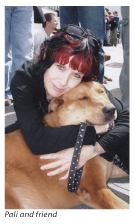 My morning started off with an early phone call from the City shelter – they had taken in a four-month-old poodle-dachshund mix that seemed very, very ill. Within a short time it became apparent that he was suffering with a Parvo virus that would kill him without immediate treatment – even with treatment he still may not survive – though it seems as if we did catch the illness early, so his chances are better of pulling through. My morning started off with an early phone call from the City shelter – they had taken in a four-month-old poodle-dachshund mix that seemed very, very ill. Within a short time it became apparent that he was suffering with a Parvo virus that would kill him without immediate treatment – even with treatment he still may not survive – though it seems as if we did catch the illness early, so his chances are better of pulling through.
When we arrived at Marina Pet [Hospital], they rushed him into the back and started treatment right away. Our hopes are high that he will survive – he is getting the best possible veterinary care.
Pali has had a pretty rough year of her own. A fire at her home claimed the lives of a number of animals. Being homeless was an experience of her younger years – but one certainly doesn’t get used to it.
Over the years, Pali estimates she has saved 1,500 animals.
What she and her volunteers need – and they also need more volunteers – is a building, a home base. A small amount of money can go a long way these days. Rocket Dog Rescue: P.O. Box 460826, S.F.,CA 94146, 415-642-4786, www.rocketdogrescue.org
– B. Bellingham

Pali’s pal, Emmylou
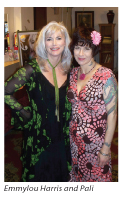 Somewhere along the way – and through Pali’s media charm – she has made friends with country music star Emmylou Harris, who has her own rescue center for otherwise doomed doggies. Somewhere along the way – and through Pali’s media charm – she has made friends with country music star Emmylou Harris, who has her own rescue center for otherwise doomed doggies.
Emmylou Harris says the care of troubled dogs is now the top priority in her life – even over her music. She calls her place outside of Nashville “Bonaparte’s Retreat,” named for a beloved puppy she once had.
Her center is dedicated to preventing shelter animals from being euthanized once their allotted time has elapsed by providing nurturing foster care, and to eventually find permanent homes for the dogs.
Bonaparte’s Retreat was created to rescue unadoptable dogs from the Nashville Humane Association, and has evolved into rescuing those that have run out of time at Metro Nashville Animal Control.
The organization is currently working on developing their foster program. For information on being a foster parent, please contact kate@emmylou.net.
Bonaparte’s Retreat: P.O. Box 158568, Nashville, TN 37215; 615-484-5193, www.emmylou.net/br.html
– B. Bellingham

It would never happen to Mr. Ed
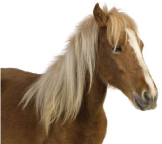 Since 1918, The SF/SPCA has provided retirement arrangements for the City’s working horses. The SFPD has had a mounted patrol unit since 1874; the current force has 10 horses. Upon retirement, these horses live out their years on a ranch in southern Sonoma County, with all housing, feed and care paid for by The SF/SPCA. Since 1918, The SF/SPCA has provided retirement arrangements for the City’s working horses. The SFPD has had a mounted patrol unit since 1874; the current force has 10 horses. Upon retirement, these horses live out their years on a ranch in southern Sonoma County, with all housing, feed and care paid for by The SF/SPCA.
The SPCA’s original goal in providing these services was to keep the City’s four-legged retirees from being sold at public auction, because many ended up bound for the slaughterhouse. An ignoble end for a noble animal – one that many horses today cannot avoid.
Across the country, hundreds of thousands of retired and unwanted horses are bought at auction to be transported to rendering facilities in Mexico or Canada. Two Northern California rescue groups are trying to make a dent in those numbers.
NorCal Equine Rescue (NER) is dedicated to equines of all kinds: horses, ponies, mules, and donkeys. NER has rescued 274 animals so far this year, a majority of those from livestock auctions. Founders Jason and Tawnee Preisner are deeply involved in saving horses that are most likely to be purchased for rendering. NER doesn’t have a large enough facility to care for the slaughter-bound horses they save, but they work with other rescue groups that can find adoptive homes, or sanctuaries where the horses can live out the remainder of their lives.
TB Friends rescues and places horses that have been abandoned or neglected, a majority being throwaways from the Bay Area racetrack industry. Joe and Cathy Shelton run TB Friends from their Oroville ranch, rescuing and housing about 200 horses each year. That number is rising, as the current economy forces local ranch reductions and foreclosures, resulting in the surrender of many purebred horses.
Each organization has an online gallery of horses available, and heart-wrenching pictures of the animals they have saved. Contact each directly to find out how you can help their rescue efforts.
NorCal Equine Rescue: P.O. Box 6108, Oroville, CA 95966; 877-Luv-Horses, www.savethehorse.com
TB Friends: 15891 County Road 92c, Woodland, CA 95695; 530-383-2120, www.tbfriends.com
– C. Beckman

BAD RAP (Bay Area Doglovers Responsible About Pit Bulls)
Perhaps no organization in the Bay Area does so much for one breed as BAD RAP does for pit bull terriers. Cofounder and executive director Donna Reynolds, and her husband, CFO and cofounder Tim Racer, work with a dedicated group of pit bull lovers and defenders, seeking not only to find homes for them, but also to educate the world and dispel the myths about this misunderstood breed.
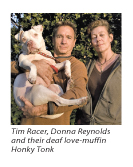 While Northside San Francisco has known about BAD RAP’s great work for many years, the group came to national attention when they stepped in to save the Michael Vick dogs. After the disgraced (and now imprisoned) NFL star’s dog-fighting ring was busted, the nearly 50 animals left on his Virginia property were treated as evidence and given a death sentence. BAD RAP and animal rights’ attorney Rebecca Huss, along with several other groups, lobbied to save the Vick dogs. It worked – in a precedent-setting case, the Virginia courts ordered that the dogs be assessed and turned over to qualified rescue organizations. While it wouldn’t come as a surprise to anyone who is owned by a pit bull, it shocked America to see how resilient and loving the Vick-tims were, as dog after dog passed the temperament test. While Northside San Francisco has known about BAD RAP’s great work for many years, the group came to national attention when they stepped in to save the Michael Vick dogs. After the disgraced (and now imprisoned) NFL star’s dog-fighting ring was busted, the nearly 50 animals left on his Virginia property were treated as evidence and given a death sentence. BAD RAP and animal rights’ attorney Rebecca Huss, along with several other groups, lobbied to save the Vick dogs. It worked – in a precedent-setting case, the Virginia courts ordered that the dogs be assessed and turned over to qualified rescue organizations. While it wouldn’t come as a surprise to anyone who is owned by a pit bull, it shocked America to see how resilient and loving the Vick-tims were, as dog after dog passed the temperament test.
BAD RAP took in 10 of the dogs, some of them appearing with Reynolds and Racer on television shows like Rachael Ray and The Lineup with Kimberly Guilfoyle, as well as countless radio and local news broadcasts. The dogs have helped to change the deep-rooted perception of “pit bulls as monsters” created by a hysterical (and irresponsible) mainstream media and lack of education.
Seven of the ten Vick dogs with BAD RAP have found forever homes and the other three are thriving in foster homes. “These were some of the most desirable dogs we’ve ever had,” Reynolds says. “They didn’t need rehabilitation, just house manners.”
Animal Planet’s Animal Witness series featured BAD RAP in an episode called “The Michael Vick Case” (check your local listings for October showings), and the group continues to work to change legislation for fighting dogs. It’s an uphill battle: In a recent Arizona case, only 6 of the 150 dogs made it to BAD RAP, while in Chicago, all of the dogs seized from a fighting ring were euthanized due to a shocking – and disheartening – recommendation from the Humane Society of the United States. As tenacious as a terrier, Reynolds doesn’t give up, traveling around the country to speak at workshops for attorneys and animal shelters, hoping to change minds and the outcome of other dog fighting cases, using the Vick case as an example.
Breed-specific legislation is something else BAD RAP is working hard to change. “Breed bans don’t work,” Reynolds says. “In Florida, you get money to rat out your neighbors – they keep lists – people who are good owners and who love their dogs are forced to move out of state or face the constant threat of having them taken away and put down … and after a decade-long ban, there are more pit bulls in Florida than ever.”
Other BAD RAP projects include the nationally recognized breed ambassador program, Pit Bull Hall at the East Bay SPCA (2005-2008), and currently the Ambassadog Project at Oakland Animal Services. Through Partners in Shelter Services, BAD RAP assists other progressive shelters in developing pit bull adoption and public outreach programs.
Contact BAD RAP for more information, to make a donation, to purchase merchandise (proceeds benefit the organization’s efforts), or to inquire about adopting a pit bull.
BAD RAP: P.O. Box 320776, S.F. 94132, 510-414-6461, www.badrap.org

Sinclair Hwang: He can use the law to defend the defenseless
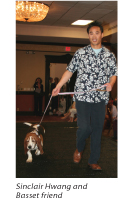 Sinclair Hwang is a corporate attorney who practices in San Mateo County and lives in San Francisco. Like many young professionals, he doesn’t have a lot of time to volunteer his time to walk dogs or murmur to melancholic kitties — but he can lend his legal expertise to his favorite agency, the Peninsula Humane Society. Sinclair Hwang is a corporate attorney who practices in San Mateo County and lives in San Francisco. Like many young professionals, he doesn’t have a lot of time to volunteer his time to walk dogs or murmur to melancholic kitties — but he can lend his legal expertise to his favorite agency, the Peninsula Humane Society.
Hwang was tapped to serve on the Peninsula Humane Society’s volunteer Board of Directors in September 2005. In that role, he’s helped guide one of the state’s largest and best-known animal shelters. As anyone familiar with nonprofit boards knows, it’s always good to have an attorney or two on the board for pro-bono guidance — and Hwang knows where the pro bono bones are buried. This attorney also recently doubled as a model at the shelter’s recent fashion show in San Bruno, Fashion for Compassion, which netted the Humane Society over $16,000.
Peninsula Humane Society & SPCA: 12 Airport
Boulevard, San Mateo, CA 94401, 650-340-7022,
www.peninsulahumanesociety.org
—B. Bellingham

How two French chefs saved my dog Shibui
By GraceAnn Walden
foie gras (pronounced ‘fwä ‘grä): the fattened liver of a waterfowl (either duck or goose) produced by force feeding the animal.
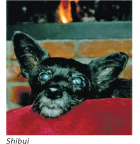 To say I rescued Shibui, a 17-pound terrier mix from The San Francisco SPCA more than 20 years ago, would be incorrect. After the sudden death of Wookie, my beloved Maltese, Shibui healed my heart. To say I rescued Shibui, a 17-pound terrier mix from The San Francisco SPCA more than 20 years ago, would be incorrect. After the sudden death of Wookie, my beloved Maltese, Shibui healed my heart.
The word Shibui has several meanings in Japanese. One, when used about art, is simple, subtle, and unobtrusive beauty. It also can mean “bitter.” For me, it meant that this little dog, a Toto look-alike, brought harmony to my life.
Like a lot of dogs at the pound, there was something wrong with this one-year-old cutie. He had separation anxiety. I read books on dog behavior; I hired a trainer. Nothing worked.
For the next 17 years, especially after I split from the big Him, Shibui went everywhere with me.
If he was left home, he didn’t bark incessantly, but rather he would let out howling screams. Once, when I was living on Telegraph Hill, he screamed at such a high pitch, a neighbor called the police. She thought someone was being raped or bludgeoned to death.
I tried crating him one day. By rocking, he moved the crate six feet. The neighbors complained.
Instead of walking down the hill to conduct my North Beach tour, I drove down to one of the inside parking structures. For some reason, he felt safe in the car and rarely barked, although one time went I went on a date and left him for four hours, he shredded the vinyl from the driver’s side door.
If left home even for a brief period, he would chew the front door. I became an expert in wood filler restoration, sanding and repainting.
He was a pain in the ass and I loved him dearly.
I used to say he got valet-parked more than most people. One date said to bring him along on our dinner at Masa’s. When the valet brought the car, I could tell something really bad had happened. Shibui had “decorated” the back seat with Hershey Kiss-sized poops. My date said, “Don’t worry.” I never saw that guy again.
Since I was writing my newspaper column, I was out gathering dish on many nights. When I would stop by chef Roland Passot’s La Folie or chef Hubert Keller’s Fleur De Lys late, Shibui was always invited in. I always told him that in France this would be the rule, not the exception.
At Fleur, after hours, we would sit talking business and gossiping, while Shibui sat on a chair next to the chef. Keller would feed him little bites of foie gras.
He was probably the most pampered mutt in San Francisco.
Shibui had another quirky and bad habit. He liked to chase skate boarders. Not the riders, but the boards. If he caught one, he would bite it.
And that’s how he almost died.
I went out with a bunch of friends to Buca di Beppo and returning to North Beach around midnight, I let him out of my car to run in Washington Square Park. At that moment, a late-night skate boarder roared down Filbert, and Shibui ran into the street to chase him. A car hit him and kept going.
Rushed to Pets Unlimited, it was touch and go. He was in shock and his leg was hurt badly; there was nerve damage.
But veterinarian Kathy Gervais performed a miracle and saved him, and I took home a weak, thin dog that limped.
At home, Shibui lay on the couch like a limp towel. I cooked all his favorites, trying to get him to eat something. I pureed chicken livers, chicken breast, and lamb. Nothing tempted him. I rubbed a smidgen on his lips – nothing.
Word spread through the restaurant community that Shibui had been hurt. He got get-well cards and several people called.
One afternoon, chef Keller called and asked how he was doing. I told him I had tried all his favorite foods to no avail.
Keller said, “What about foie gras?”
I told him I hadn’t tried that, thinking to myself that foie wasn’t something you could pick up at the corner store.
The next day, my doorbell rang and when I answered it, there was a large brown shopping bag at my door.
I brought it inside and pulled out a Limoges plate wrapped in plastic and a small bottle of sauterne. On the plate were small slices of a foie gras terrine. The plate was artfully decorated with cucumber and cherry tomatoes.
I poured myself a glass of sauterne and cut off a small bit of foie gras. I offered it to the “limp towel” on the sofa, who was dozing. His eyes opened and then opened further. He then gobbled the foie.
Over the next few days, I made the foie last by cooking chicken livers rare, mashing them and incorporating some foie. All of a sudden, Shibui seemed to look forward to dinnertime.
Day by day he got stronger.
Then one day, I ran out of foie. That day, I took him for a checkup with his vet, Kathy. On my way home, I thought about foie and pulled over at La Folie on Polk Street. Sommelier George Passot came out of the restaurant, looked into my car and said, “What’s wrong with Shibui?”
I told him and asked to “borrow” some foie.
The next thing I knew, chef Roland Passot was running out with a package in his hand.
We got through the crisis. Shibui ate foie and other foods and I massaged his bum leg many times a day. The odd thing was, that after his accident and recovery, he never wanted to eat foie again.
Subsequently, when I was in French Canada, I visited a foie gras farm.
After that visit, I gave it up also.
GraceAnn Walden writes about food, conducts tours of
S.F. neighborhoods and lives with Cosmo the Wonder Dog, a Chihuahua, and four crazy cockatiels. E-mail: graceann@northsidesf.com


|
|
|
|
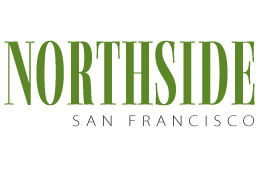



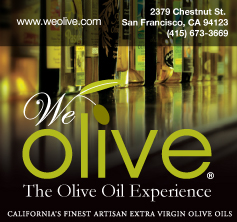


 Kimberly Guilfoyle, the former first lady of San Francisco, is now a genuine TV star in New York City and across the country, having made the transition from successful prosecutor to media sensation. Her passion has always shown in her work, no matter what she undertakes, and that includes her support for animal rights. She rose to national prominence during the infamous San Francisco “dog maul trial” where, as second chair, her team landed a second-degree murder charge against the owner of the dogs that killed a Pacific Heights woman. (That verdict was subsequently thrown out, but just recently has been reinstated.) “In so many cases, it is not the animal’s fault that there is violence,” says Guilfoyle. “You have to train these animals properly. They can become weapons.” Her frequent media appearances led to gigs on Good Morning America and Court TV, but she finally landed a permanent position as host of The Lineup on Fox Television. The frequent flying to New York took a toll on her marriage, in 2006 she and Mayor Newsom divorced. She has since remarried and has a son, Ronan. Guilfoyle is a big supporter of the many animal shelters throughout New York and the Humane Society of the United States.
Kimberly Guilfoyle, the former first lady of San Francisco, is now a genuine TV star in New York City and across the country, having made the transition from successful prosecutor to media sensation. Her passion has always shown in her work, no matter what she undertakes, and that includes her support for animal rights. She rose to national prominence during the infamous San Francisco “dog maul trial” where, as second chair, her team landed a second-degree murder charge against the owner of the dogs that killed a Pacific Heights woman. (That verdict was subsequently thrown out, but just recently has been reinstated.) “In so many cases, it is not the animal’s fault that there is violence,” says Guilfoyle. “You have to train these animals properly. They can become weapons.” Her frequent media appearances led to gigs on Good Morning America and Court TV, but she finally landed a permanent position as host of The Lineup on Fox Television. The frequent flying to New York took a toll on her marriage, in 2006 she and Mayor Newsom divorced. She has since remarried and has a son, Ronan. Guilfoyle is a big supporter of the many animal shelters throughout New York and the Humane Society of the United States. Comcast
Comcast Pet Adoptions on Demand: Tune to Channel 1 for the On Demand menu, go to “Get Local” and select “Pet Adoptions.”
Pet Adoptions on Demand: Tune to Channel 1 for the On Demand menu, go to “Get Local” and select “Pet Adoptions.” Dorothy Hearst didn’t know it, but she’d been working – in her head – on her first published novel, Promise of the Wolves, for over 10 years. She was busy doing other things, including acting in New York. At the age of 40, she got a black belt in tae kwon do. Although she was busy working in the publishing business, the wolves would not let her go. She quit her job, immersed herself in the book, got it finished, and got it published. Hearst managed to keep the wolves from the door and invite them in at the same time. She now lives in Berkeley where there are lots of dogs – and wolves, I suppose. “As for Berkeley,” chuckles Dorothy, “DHL considers it a remote area.”
Dorothy Hearst didn’t know it, but she’d been working – in her head – on her first published novel, Promise of the Wolves, for over 10 years. She was busy doing other things, including acting in New York. At the age of 40, she got a black belt in tae kwon do. Although she was busy working in the publishing business, the wolves would not let her go. She quit her job, immersed herself in the book, got it finished, and got it published. Hearst managed to keep the wolves from the door and invite them in at the same time. She now lives in Berkeley where there are lots of dogs – and wolves, I suppose. “As for Berkeley,” chuckles Dorothy, “DHL considers it a remote area.” Marcy Schaaf is a Bay Area bunny’s best friend. Schaaf is the founder of SaveABunny, an unflagging rescue group that partners with animal shelters nationwide to provide care and adoption services for homeless rabbits. S.F. Animal Care and Control is currently the only City shelter that accepts rabbits and other small animals, but SaveABunny coordinates adoption outreach events with The SF/SPCA and Pets Unlimited to provide needy bunnies a wider adoption audience.
Marcy Schaaf is a Bay Area bunny’s best friend. Schaaf is the founder of SaveABunny, an unflagging rescue group that partners with animal shelters nationwide to provide care and adoption services for homeless rabbits. S.F. Animal Care and Control is currently the only City shelter that accepts rabbits and other small animals, but SaveABunny coordinates adoption outreach events with The SF/SPCA and Pets Unlimited to provide needy bunnies a wider adoption audience. My morning started off with an early phone call from the City shelter – they had taken in a four-month-old poodle-dachshund mix that seemed very, very ill. Within a short time it became apparent that he was suffering with a Parvo virus that would kill him without immediate treatment – even with treatment he still may not survive – though it seems as if we did catch the illness early, so his chances are better of pulling through.
My morning started off with an early phone call from the City shelter – they had taken in a four-month-old poodle-dachshund mix that seemed very, very ill. Within a short time it became apparent that he was suffering with a Parvo virus that would kill him without immediate treatment – even with treatment he still may not survive – though it seems as if we did catch the illness early, so his chances are better of pulling through. Somewhere along the way – and through Pali’s media charm – she has made friends with country music star Emmylou Harris, who has her own rescue center for otherwise doomed doggies.
Somewhere along the way – and through Pali’s media charm – she has made friends with country music star Emmylou Harris, who has her own rescue center for otherwise doomed doggies.  Since 1918, The SF/SPCA has provided retirement arrangements for the City’s working horses. The SFPD has had a mounted patrol unit since 1874; the current force has 10 horses. Upon retirement, these horses live out their years on a ranch in southern Sonoma County, with all housing, feed and care paid for by The SF/SPCA.
Since 1918, The SF/SPCA has provided retirement arrangements for the City’s working horses. The SFPD has had a mounted patrol unit since 1874; the current force has 10 horses. Upon retirement, these horses live out their years on a ranch in southern Sonoma County, with all housing, feed and care paid for by The SF/SPCA. While Northside San Francisco has known about BAD RAP’s great work for many years, the group came to national attention when they stepped in to save the Michael Vick dogs. After the disgraced (and now imprisoned) NFL star’s dog-fighting ring was busted, the nearly 50 animals left on his Virginia property were treated as evidence and given a death sentence. BAD RAP and animal rights’ attorney Rebecca Huss, along with several other groups, lobbied to save the Vick dogs. It worked – in a precedent-setting case, the Virginia courts ordered that the dogs be assessed and turned over to qualified rescue organizations. While it wouldn’t come as a surprise to anyone who is owned by a pit bull, it shocked America to see how resilient and loving the Vick-tims were, as dog after dog passed the temperament test.
While Northside San Francisco has known about BAD RAP’s great work for many years, the group came to national attention when they stepped in to save the Michael Vick dogs. After the disgraced (and now imprisoned) NFL star’s dog-fighting ring was busted, the nearly 50 animals left on his Virginia property were treated as evidence and given a death sentence. BAD RAP and animal rights’ attorney Rebecca Huss, along with several other groups, lobbied to save the Vick dogs. It worked – in a precedent-setting case, the Virginia courts ordered that the dogs be assessed and turned over to qualified rescue organizations. While it wouldn’t come as a surprise to anyone who is owned by a pit bull, it shocked America to see how resilient and loving the Vick-tims were, as dog after dog passed the temperament test.  Sinclair Hwang is a corporate attorney who practices in San Mateo County and lives in San Francisco. Like many young professionals, he doesn’t have a lot of time to volunteer his time to walk dogs or murmur to melancholic kitties — but he can lend his legal expertise to his favorite agency, the Peninsula Humane Society.
Sinclair Hwang is a corporate attorney who practices in San Mateo County and lives in San Francisco. Like many young professionals, he doesn’t have a lot of time to volunteer his time to walk dogs or murmur to melancholic kitties — but he can lend his legal expertise to his favorite agency, the Peninsula Humane Society.  To say I rescued Shibui, a 17-pound terrier mix from The San Francisco SPCA more than 20 years ago, would be incorrect. After the sudden death of Wookie, my beloved Maltese, Shibui healed my heart.
To say I rescued Shibui, a 17-pound terrier mix from The San Francisco SPCA more than 20 years ago, would be incorrect. After the sudden death of Wookie, my beloved Maltese, Shibui healed my heart.
